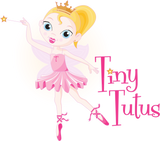How to Tell if a Ballet Program Is Actually Teaching Ballet
How to Tell if a Ballet Program Is Actually Teaching Ballet
A real ballet program teaches technique, structure, and terminology appropriate to the child’s age. Look for consistent class routines, ballet vocabulary, qualified teachers, and progression over time. Props, games, or parachutes may be fun, but without structured learning, it’s not true ballet.
Just Because It Has Tutus… Doesn’t Mean It’s Ballet
Preschoolers in cute costumes are always adorable, but that doesn’t mean they’re being taught real ballet.
At Tiny Tutus, we specialise in ballet that’s both magical and meaningful. And we hear from many families who tried other classes first, only to realise their child had been playing, not learning.
So how can you tell if a toddler or preschool ballet program is truly teaching ballet, and not just offering 30 minutes of dress-up and distraction?
1. Are Ballet Terms Actually Being Used?
Real ballet has a language of its own. And that language can be taught gently and consistently from a young age.
You should hear your child talking about:
- Pliés (bending knees)
- Tendus (stretching feet)
- Port de bras (arm movement)
- Chassés, sautés, relevés, all introduced gradually, in context
At Tiny Tutus, our students absorb real ballet vocabulary through songs, stories, and structured exercises. It’s not forced, it’s integrated.
2. Is There a Class Structure That Repeats Weekly?
A proper ballet class includes:
- A warm-up
- Technical skill development
- Movement sequences
- Creative interpretation
- A clear closing routine
If every week is different, chaotic, or full of obstacle courses — it’s likely not a ballet class.
Tiny Tutus classes follow the same proven structure every week, giving children safety through repetition while building long-term skill development.
3. Are Props Used to Teach, or Just to Fill Time?
There’s nothing wrong with a ribbon or scarf when it’s used intentionally to teach ballet movement.
But if you’re seeing:
- Bean bags
- Parachutes
- Mini trampolines
- Obstacle courses
- Balance beams
…you may be looking at behaviour management tools, not ballet technique.
We never use these distractions. At Tiny Tutus, every movement is chosen for a reason — to build strength, coordination, posture, and grace.
4. Are Teachers Trained in Both Ballet and Early Childhood?
Great toddler ballet teachers are rare, because they must be both:
- Technically trained in ballet, and
- Deeply knowledgeable in early childhood development
Tiny Tutus teachers complete a nationally endorsed training program that prepares them to meet children where they are emotionally, physically, and developmentally, without compromising on real ballet outcomes.
5. Does Your Child Show Progress Over Time?
In a real ballet program, your child should gradually:
- Use more ballet terms
- Develop better posture and balance
- Become more coordinated
- Learn to follow classroom routines and sequences
At Tiny Tutus, we see students grow from their first shaky plié at 16 months into confident young dancers by age 6–8, because we teach ballet as a progression, not just a weekly activity.
If It’s Real Ballet, You’ll Know
You’ll see it in how your child:
- Talks about class
- Moves around the house
- Looks forward to the next lesson
- Builds quiet confidence and poise
And most of all, you’ll feel it in the way the class is run.
At Tiny Tutus, we don’t believe in fluff, filler, or gimmicks. We believe in real ballet, taught gently, joyfully, and properly from the very beginning.
We'd love to welcome you to Tiny Tutus! Book a Class That Celebrates Every Personality today or Learn More About Our Child-Led, Confidence-Building Approach here
